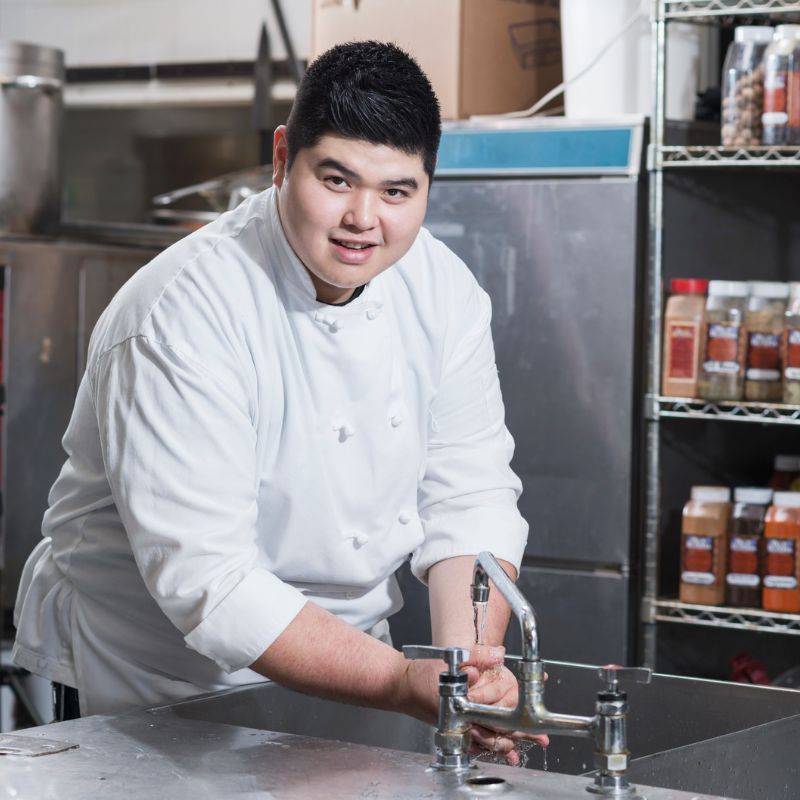
Food Service Safety — There are no acceptable safety shortcuts in the food service industry. Handling food – whether you’re prepping it, cooking, placing it, or serving it – should always be done with care.
No matter what your job in the food service industry, always follow your workplace’s health & safety guidelines. If you’re ever unsure about a procedure, ask. Food handling must always be done safely.
Cleanliness
Wash your hands with warm, soapy water for at least 20 seconds before and after handling food. Clean cutting boards and surfaces after use to ensure no cross contamination occurs.
Cross Contamination
It is important to keep raw & cooked foods separate. Use separate cutting boards & knives for chopping ready to eat produce and raw meats.
Because it promotes the consumption of bacteria and other viruses, cross-contamination is one of the biggest causes of food poisoning . Some of the most common bacteria that thrive on cross-contamination are salmonella, clostridium, and campylobacter.
Under the right conditions, bacteria can reproduce quickly, so use your food safety knowledge to stop bacteria at the source. Safe practices like cross-contamination prevention and proper food storage are excellent habits to have when working in the food service industry.
Highest-risk foods for Cross-Contamination
Unfortunately, common foods are at the highest risk for cross-contamination. Most of the bacteria mentioned here can be found in food items like eggs, meat, poultry, and seafood.
It is crucial that these items are kept separate from each other prior to cooking is important for food safety and illness prevention.


Cooking
Use an accurate thermometer to measure the internal temperature of meat and meat products. Measure the temperature in the thickets part of the food. Thoroughly wash thermometers after each use.
Hot and cold
Keep hot foods hot and cold foods cold. Bacteria can grow in the “danger zone” (41° F – 135° F) if food is left for an extended period of time.
Food service employees
Food service employees should wash their hands frequently. This is critical to preventing outbreaks of diseases like norovirus, Campylobacter, Salmonella, and E. coli.
Here’s a reminder:
- Wet hands with warm water.
- Apply soap.
- Lather well with soap.
- Rinse the soap well using warm water.
- Dry hands.
- Keep hands clean.

Follow workplace guidelines
Always follow your workplace health and safety guidelines. If you’re ever unsure about a procedure, ask. Food handling must always be done safely. If you would like to learn more, visit the CDC’s page about food safety handling.

